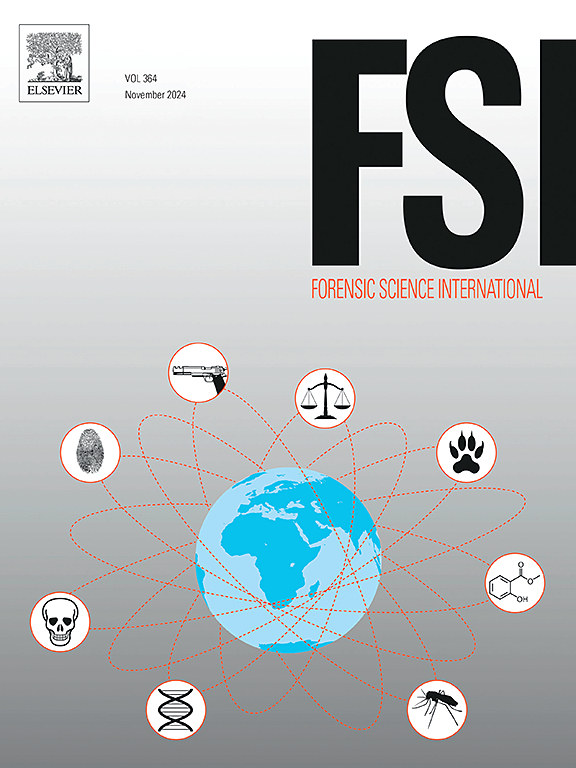Postmortem distribution of etizolam in various autopsy samples using the surrogate analyte approach (SAA) method
IF 2.2
3区 医学
Q1 MEDICINE, LEGAL
引用次数: 0
Abstract
Etizolam, a type of anxiolytic drug, is the most commonly abused drug among hypnotic/anxiolytic medications in Japan. Although there have been reports on the postmortem identification of etizolam in the blood, the detailed distribution of etizolam among organs in an abuse case has not been reported. In this study, we examined etizolam concentrations in the blood and organs obtained from etizolam-related autopsy cases using the surrogate analyte approach (SAA) method, which can be analytically used without blank samples. Target compounds were extracted from samples using the QuEChERS method and filtrated with Captiva ND Lipids. Then, the eluates were analyzed by LC-MS/MS. Etizolam-d₃ was used as a stable isotope-labeled surrogate compound with this quantification approach. A strong linear correlation was observed for each sample, showing a correlation coefficient value at least 0.99. The right heart, left heart, and femoral vein blood etizolam concentrations ranged from 85.2 to 178.2 ng/mL, while this concentration was 592.0 ng/g in liver tissue. Here, we could determine the etizolam concentration in various autopsy samples using LC-MS/MS. In addition, this work demonstrated that the SAA method can be successfully applied to various human samples.
使用替代分析物方法(SAA)在各种尸检样本中的死后分布
安替唑仑是一种抗焦虑药物,是日本最常被滥用的催眠/抗焦虑药物。虽然有关于尸体后血液中发现安替唑仑的报告,但在滥用案件中,安替唑仑在器官中的详细分布情况尚未见报道。在这项研究中,我们使用替代分析物方法(SAA)检测了从依替唑仑相关尸检病例中获得的血液和器官中的依替唑仑浓度,该方法可以在没有空白样本的情况下进行分析。使用QuEChERS方法从样品中提取目标化合物,并用Captiva ND Lipids过滤。洗脱液采用LC-MS/MS进行分析。乙替唑仑-d₃被用作稳定同位素标记的替代化合物。各样本均有较强的线性相关,相关系数至少为0.99。右心、左心和股静脉血液中依替唑仑浓度为85.2 ~ 178.2 ng/mL,而肝组织中依替唑仑浓度为592.0 ng/g。在这里,我们可以使用LC-MS/MS测定不同尸检样品中的依替唑仑浓度。此外,本工作还证明了SAA方法可以成功地应用于各种人体样本。
本文章由计算机程序翻译,如有差异,请以英文原文为准。
求助全文
约1分钟内获得全文
求助全文
来源期刊

Forensic science international
医学-医学:法
CiteScore
5.00
自引率
9.10%
发文量
285
审稿时长
49 days
期刊介绍:
Forensic Science International is the flagship journal in the prestigious Forensic Science International family, publishing the most innovative, cutting-edge, and influential contributions across the forensic sciences. Fields include: forensic pathology and histochemistry, chemistry, biochemistry and toxicology, biology, serology, odontology, psychiatry, anthropology, digital forensics, the physical sciences, firearms, and document examination, as well as investigations of value to public health in its broadest sense, and the important marginal area where science and medicine interact with the law.
The journal publishes:
Case Reports
Commentaries
Letters to the Editor
Original Research Papers (Regular Papers)
Rapid Communications
Review Articles
Technical Notes.
 求助内容:
求助内容: 应助结果提醒方式:
应助结果提醒方式:


